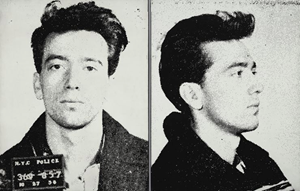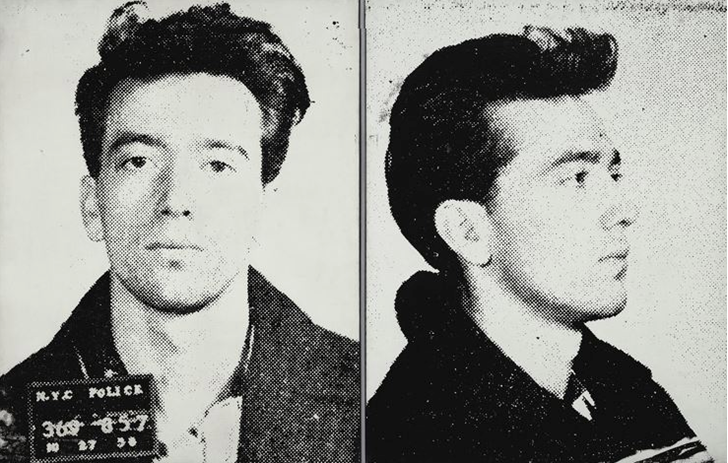
This Spring, Christie’s will offer Andy Warhol’s Most Wanted Men, No. 11, John Joseph H., Jr., 1964 (estimate in the range of $30 million) as a highlight of its May 17th Evening Sale of Post-War and Contemporary Art.
This Spring, Christie’s will offer Andy Warhol’s Most Wanted Men, No. 11, John Joseph H., Jr., 1964 (estimate in the range of $30 million) as a highlight of its May 17th Evening Sale of Post-War and Contemporary Art. This diptych belongs to one of the artist’s controversial Most Wanted Men series, which was originally conceived as a monumental mural to celebrate the 1964 New York World’s Fair, and famously destroyed just a few days before the fair’s official opening. Later that year, Warhol made a series of nearly two dozen larger than life size canvases featuring thirteen of these “most wanted” men, among them was the present work.
On May 17, Most Wanted Men No. 11, will be offered alongside Double Elvis [Ferus Type], 1963, uniting two exceptional canvases that share in Warhol’s obsession with American icons of all kinds.
Part of this important series, Most Wanted Men No. 11, John Joseph H., Jr. is one of only six subjects that Warhol made two versions of, with this particular work’s sister painting being housed in the permanent collection of the Museum für Moderne Kunst, Frankfurt am Main. With his boyish good looks rendered in Ben-day dots, Most Wanted Men No. 11 John Joseph H., Jr is a haunting reminder of the dark underside of America during a time when the country was projecting a confident, forward looking culture to the rest of the world.
In the beginning of 1963, the architect Philip Johnson approached Andy Warhol, along with Ellsworth Kelly, Roy Lichtenstein, Robert Indiana, Peter Agostini, John Chamberlain, James Rosenquist, Robert Mallary, and Alexander Lieberman, to create a mural-sized work to adorn the outside of the Panoramic Cinema Theater, a centerpiece of the New York State Pavilion at the World’s Fair to be held the following year. For his part, Warhol decided to reproduce, on a monumental scale, thirteen mugshots of various criminals taken from a booklet entitled The Thirteen Most Wanted Men.
The Thirteen Most Wanted Men series was controversial from the start. The large-scale mural was painted over just days after it was first installed, although the exact reasons have proved to be difficult to ascertain. Initially it was thought that Warhol himself had instigated this process, saying that he wasn’t happy with the final result. While press reports at the time reported that, “Mr. Warhol claims that the work was not properly installed and felt that it did not do justice to what he had in mind. Mr. Johnson [Philip Johnson, the architect] said yesterday that he was in agreement with the artist and ordered the mural removed from the building.” But perhaps more logically, it might have been felt by the fair’s organizers that a work of art depicting armed robbers and murderers was not in keeping with the fair’s theme of “Man’s Achievement on a Shrinking Globe in an Expanding Universe.” Whatever the precise circumstances around this act of censorship (or self-censorship), the resulting controversy has meant this series has an important place in the artist’s oeuvre.

Most Wanted Men No. 11, John Joseph H., Jr. was acquired first by Mickey Ruskin, the founder and owner of the legendary New York nightclub and restaurant Max’s Kansas City. Soon after it opened in December 1965, Max’s became the regular hangout of a new generation of New School painters and sculptors that included Robert Rauschenberg, John Chamberlain and Larry Rivers; other artists who frequented the venue included Brice Marden, Roy Lichtenstein, Richard Serra, Donald Judd and Dan Flavin. But perhaps their most famous patron was Warhol himself, who would often frequent the famous backroom, taking over the entire space and turning it into the epicenter of New York night life at the time. In addition to this distinguished provenance, the painting has been included in a number of important exhibitions including the seminal retrospective of Warhol’s work organized by New York’s Museum of Modern Art in 1989, and which later travelled to the Hayward Gallery in London and the Centre Georges Pompidou in Paris.

ArtDependence Magazine is an international magazine covering all spheres of contemporary art, as well as modern and classical art.
ArtDependence features the latest art news, highlighting interviews with today’s most influential artists, galleries, curators, collectors, fair directors and individuals at the axis of the arts.
The magazine also covers series of articles and reviews on critical art events, new publications and other foremost happenings in the art world.
If you would like to submit events or editorial content to ArtDependence Magazine, please feel free to reach the magazine via the contact page.